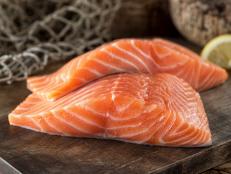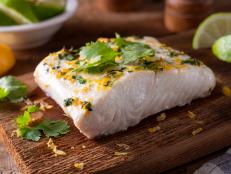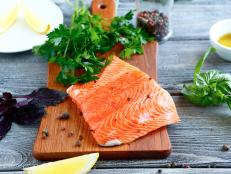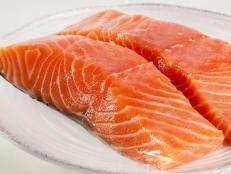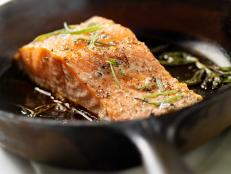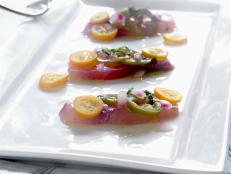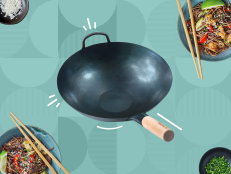Sardines Versus Anchovies: What’s the Difference?
And are they interchangeable in recipes?

Claudia Totir/Getty Images
By Layla Khoury-Hanold for Food Network Kitchen
Layla Khoury-Hanold is a contributor at Food Network.
Both anchovies and sardines are small, oily fish that add a punch of flavor to a variety of dishes, but the similarities stop there. To unpack the differences, we consulted Lucia Flors and Carlos Leiva, co-founders of Siesta Co., a company offering sustainably sourced, organic tinned seafood from Spain.

© eleonora galli/Getty Images
What Is an Anchovy?
An anchovy is a small fish that is part of the Engraulidae family; there are more than 100 different species of anchovies. Anchovies have slender bodies that are green and silvery-blue in color, with a silver stripe along their side. Other defining characteristics of anchovies include pointy heads and large mouths. “They’re found in marine waters, mostly in temperate waters. They’re abundant and commonly caught in the Mediterranean Sea and off the Atlantic coast of Europe,” Leiva says. “Anchovies are often sold fresh, whole with their heads in fish markets around the Mediterranean Sea, and tinned anchovies are generally salt-cured with olive oil.”
What Do Anchovies Taste Like?
Although anchovies are available fresh, anchovies are typically filleted, salt-cured and preserved in olive oil. “You can tell canned anchovies are salt-cured when they have a characteristic brown color,” Leiva says. “This process gives them a salty, intense and punchy flavor that makes them great for mixing into dressings to enhance their flavors or mixed with milder ingredients in salads or pasta.” Leiva shares that in Spain, fresh anchovies are often breaded and fried, and they boast a slightly stronger flavor than fresh sardines.

Westend61/Getty Images
What Is a Sardine?
A sardine is a small fish from the Clupeidae family; a few of the most common species of sardines are Sardina, Sardinops and Sardinella. Sardines have silvery scales with green and blue markings, large heads and small mouths. Whole sardines can be sold fresh or preserved in olive oil, water or other sauces. Fileted and scaled sardines are also preserved and canned.
“Sardines populate the waters of the world’s oceans and are especially copious in the Mediterranean Sea and Atlantic Ocean,” Leiva says.
What Do Sardines Taste Like?
Leiva notes that sardines have a milder, more complex, brinier and less fishy flavor than anchovies. In the Mediterranean, sardines are often grilled and topped simply with olive oil, garlic and parsley.
Because of their texture, sardines are difficult to filet for salt curing and are typically canned in olive oil, resulting in a less pungent flavor. “Sardines have a dense, meaty and oily texture, with a rich yet delicate flavor,” he says.

Magone/Getty Images
Sardines vs. Anchovies: What’s the Difference?
Sardines and anchovies are both small, oily fishes. They are both pelagic fish, meaning they live in the pelagic zone, away from the shore and from the bottom of the ocean. Appearance-wise, sardines and anchovies share several similar characteristics. “They are both small (around 4 inches) relatively slender fish with pointy heads and silvery scales with green and blue reflections. They are short-lived, highly productive and both are key food sources for many marine species,” Flors says. “They are both rich in nutrients like iron, calcium, protein and omega-3 fatty acids. They are low in mercury.”
Anchovies and sardines belong to different families: anchovies are from the Engraulidae family, while sardines are part of the Clupeidae family. Sardines tend to be slightly larger and chubbier than anchovies, with a much smaller mouth. Sardines are typically preserved in olive oil, giving them a milder, rounded flavor, while anchovies are more often salt-cured, which gives them a more pungent, fishier flavor.

Photograph by David Malosh
Are Sardines and Anchovies Interchangeable In Recipes?
If a recipe calls for grilling or frying fresh sardines or anchovies, they can be used interchangeably. “Being relatively oily, they are both packed with umami flavor and can get a nice, crispy texture when cooked this way,” Leiva says.
If a recipe calls for tinned sardines or anchovies, Leiva doesn’t recommend swapping one for the other. “Due to their texture, tinned sardines tend to be bone-in, scale-free, while tinned anchovies are filleted, salt-cured and packed with olive oil,” he says. “Salt curing further enhances the anchovies’ flavor and its umami flavor, and results in a softer more melting texture, whereas canned sardines preserve a firmer texture and more refined although assertive flavor.”
Both preserved sardines and anchovies can be served on toast, as with these Open-Faced Sardine Sandwiches (pictured above). But it depends on the flavor profile you’re after; sardines will have a brinier, more complex flavor, while anchovies will have a more pungent flavor.

Photograph by David Malosh
How to Use Sardines and Anchovies
“Sardines go well with almost anything,” Leiva says. “Good sardines are hard to beat straight out of the can, or over some bread, but also are great in salads, or more elaborate toasts, with red peppers and olives or pickled onion and aioli, for example.”
Similarly, tinned anchovies are ready to eat out of the can, such as on top of toast or salads. “They are also a delicacy with olive oil, or over grated or sliced tomato. They are excellent when used to boost the flavor of salads, all kinds of dressings and in pasta or on top of pizza,” Leiva says. “In Spain, we marinate anchovies with vinegar (boquerones en vinagre) and eat them alone as a classic tapa or aperitivo, over a toast, or with olives.” For your next party trick, try making these Anchovy-Wrapped Olives or serve them as part of a snack plate (pictured above). Use anchovies to bolster dressings as with this classic Caesar Salad, or dips, like this Olive-Anchovy Mayo.
Related Links:























